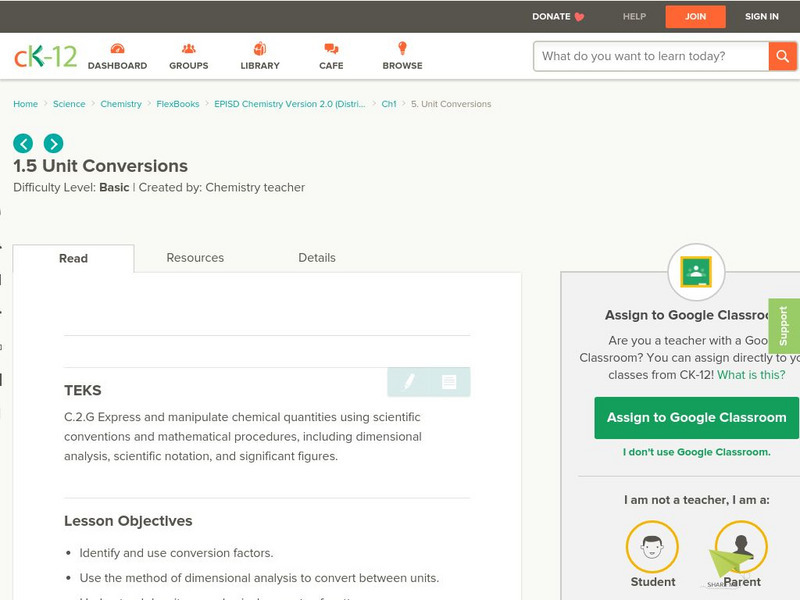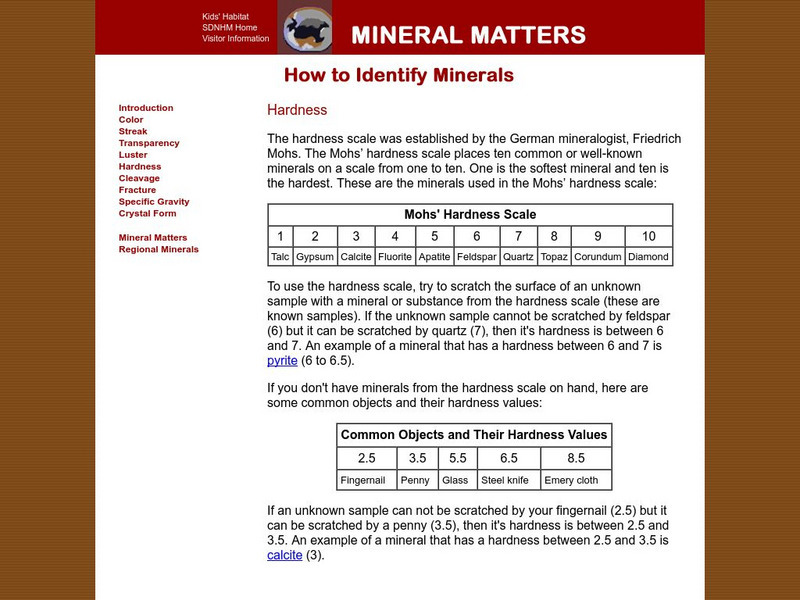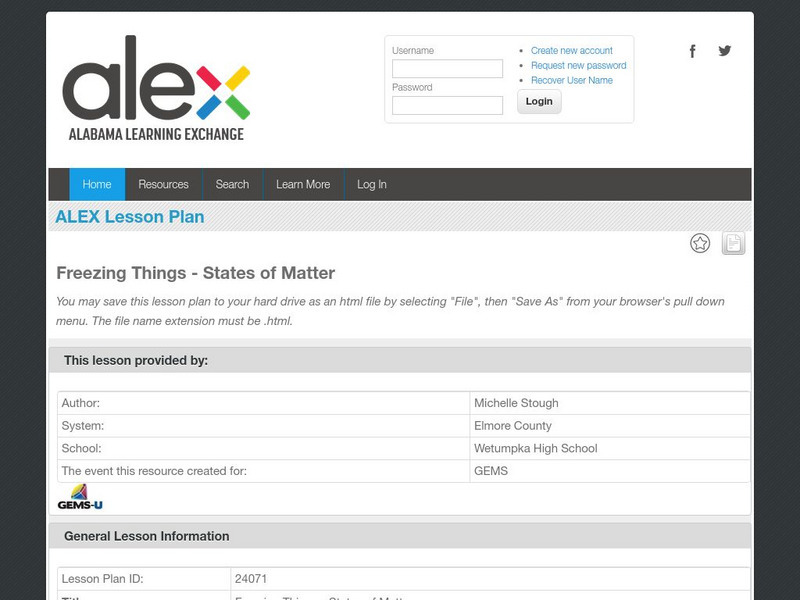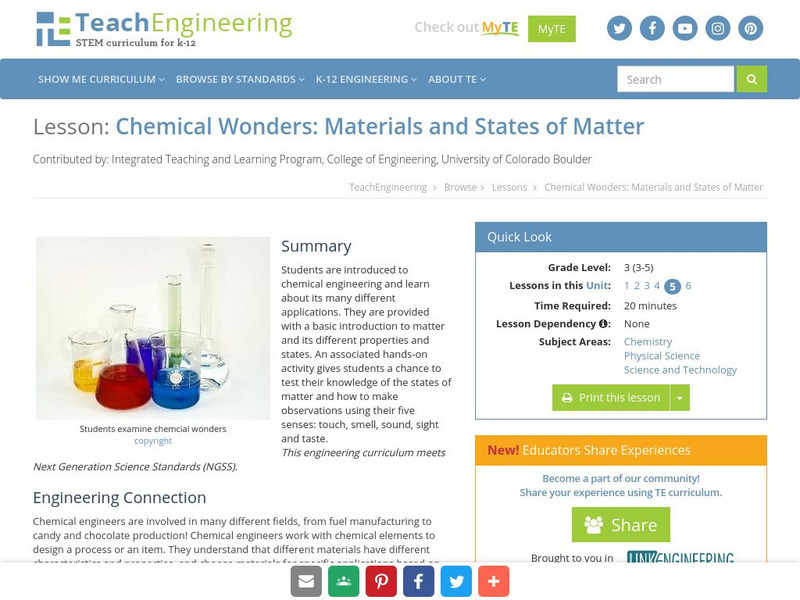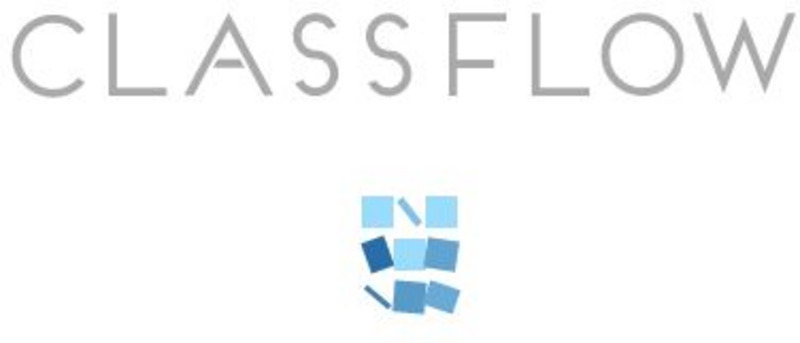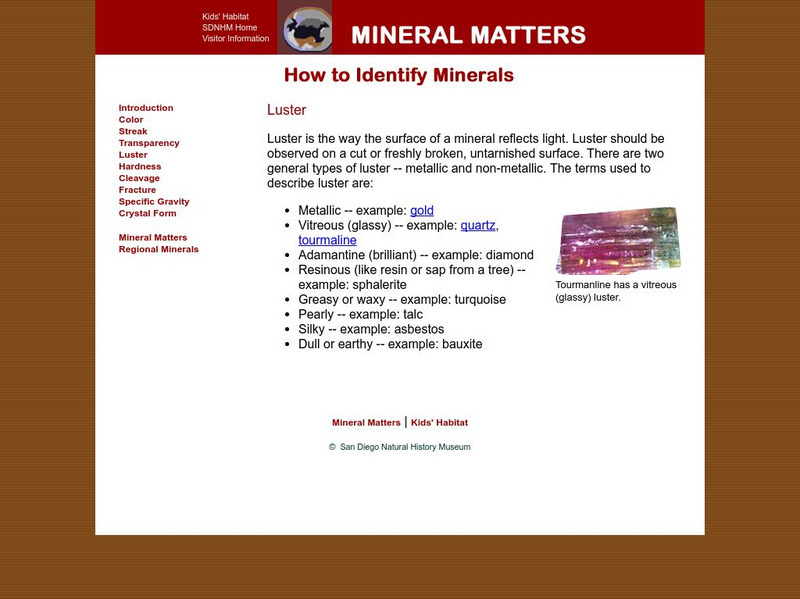Science and Mathematics Initiative for Learning Enhancement (SMILE)
Smile: Three States of Matter
Teachers can find an interactive lesson plan for introducing the three states of matter to the early elementary student using items that they are familiar with. This also includes gathering data and filling in a table, an important part...
San Diego Natural History Museum
San Diego Natural History Museum: Mineral Matters: Grow Your Own Crystals
Here are step-by-step instructions on how to create crystals. This is a great experiment for students to use in learning about the structure and formation of crystals.
Science Education Resource Center at Carleton College
Serc: Measuring and Comparing Matter
In this activity, students will measure a variety of different materials from the classroom to determine how much matter is found in these materials then determine the mass of these materials using the same volume for each. The data will...
CK-12 Foundation
Ck 12: Unit Conversions
[Free Registration/Login may be required to access all resource tools.] In this online tutorial students will begin to identify and use conversion factors and to also use the method of dimensional analysis to convert between units....
San Diego Natural History Museum
San Diego Natural History Museum: Mineral Matters: Hardness
Identifying a mineral by hardness? This website explains how to use the Mohs' hardness scale and provides examples.
Alabama Learning Exchange
Alex: Freezing Things: States of Matter
The class will go back over the Power Point presentation on chemical and physical properties. The teacher will then conduct numerous liquid nitrogen demos. This lesson is used early in the Chemistry course. The students love it. This...
Sophia Learning
Sophia: Chemical and Physical Properties Defined
This lesson will define chemical and physical properties and introduce methods used in chemistry to measure chemical and physical properties.
TeachEngineering
Teach Engineering: Measuring Viscosity
Students calculate the viscosity of various household fluids by measuring the amount of time it takes marble or steel balls to fall given distances through the liquids. They experience what viscosity means, and also practice using...
TeachEngineering
Teach Engineering: Antimatter Matters
Antimatter, the charge reversed equivalent of matter, has captured the imaginations of science fiction fans for years as a perfectly efficient form of energy. While normal matter consists of atoms with negatively charged electrons...
ClassFlow
Class Flow: Does Matter Really Matter?
[Free Registration/Login Required] This flipchart teaches the different states of matter. Use the magic revealer to check your answers in this creative flipchart full of many examples and activities.
TeachEngineering
Teach Engineering: Chemical Wonders
Students are introduced to chemical engineering and learn about its many different applications. They are provided with a basic introduction to matter and its different properties and states. An associated hands-on activity gives...
PBS
Pbs Learning Media: The Ruff Ruffman Show: Teacher's Guide: Kitchen Chemistry
Learn about kitchen chemistry alongside Ruff Ruffman. Students can use the videos, games, and activities from The Ruff Ruffman Show to discover how by investigating solids and liquids and exploring heating and cooling, science can help...
PBS
Pbs Learning Media: The Ruff Ruffman Show: Ruff's Cookie Creator
Use science inquiry to explore and test different ingredients to help Ruff make, decorate, and serve cookies to his family in this kitchen science game.
American Chemical Society
Middle School Chemistry: What Is Density?
Calculate the density of cubes made of different materials to determine what type of material it contains. Using this information explain that the size, mass, and arrangement of the atoms or molecules of a substance determines its density.
ClassFlow
Class Flow: Matter Review
[Free Registration/Login Required] Review the three forms of matter with this flipchart. This could also be used for a pre-assessment before a unit on matter.
San Diego Natural History Museum
San Diego Natural History Museum: Mineral Matters: Luster
A brief introduction to identifying a mineral by its luster. Examples of terms used to describe luster, such as metallic, glassy, and dull are listed.





